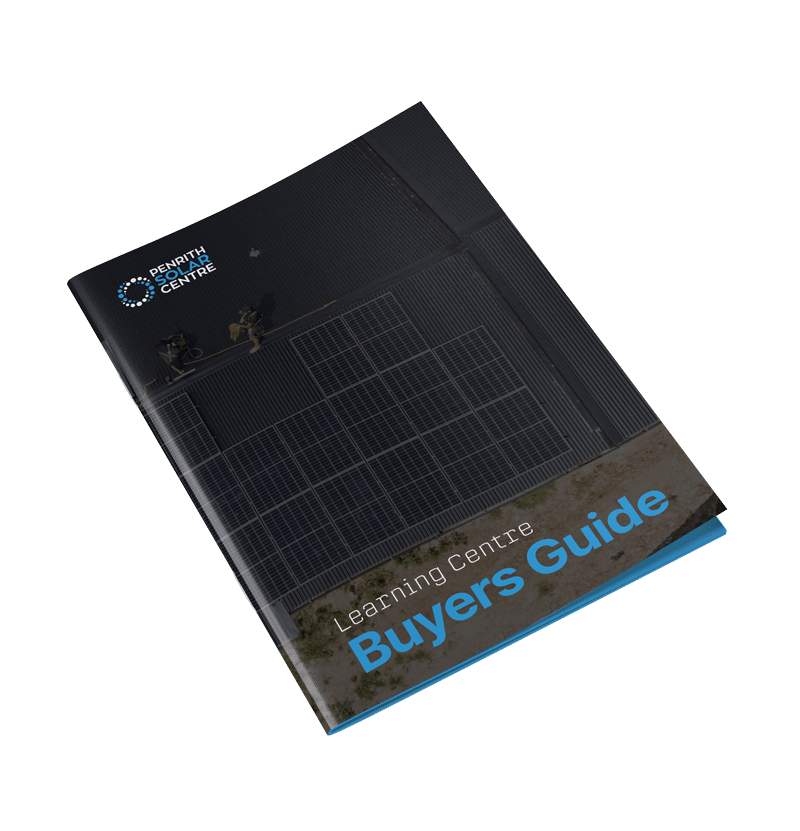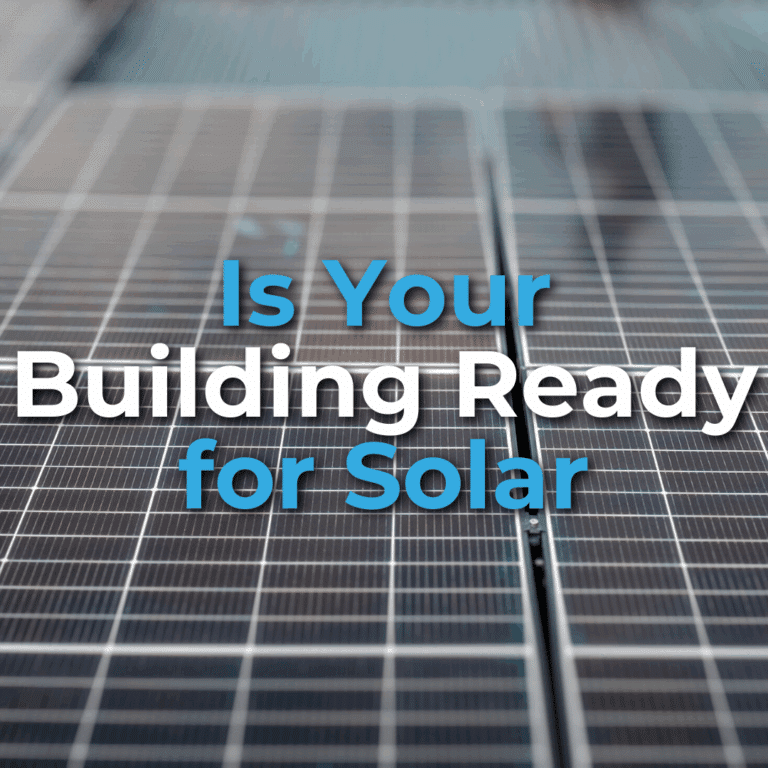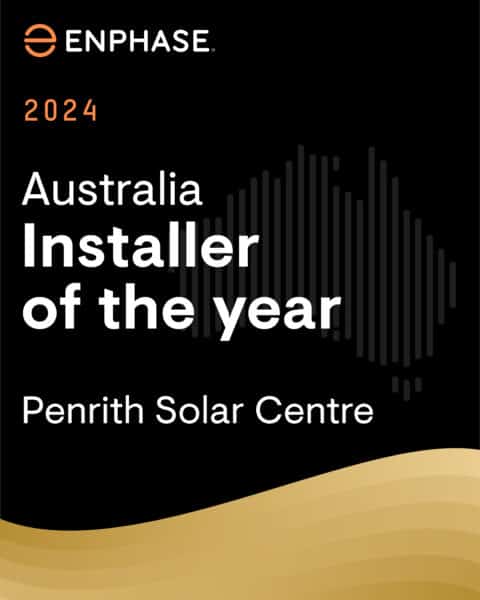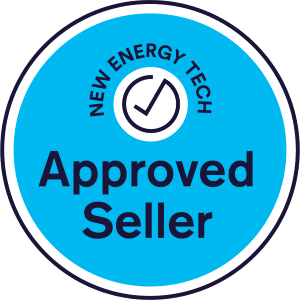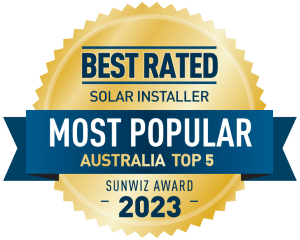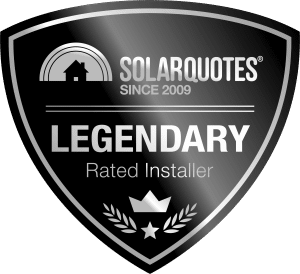Updated on November 5, 2025
There’s a lot of misinformation on the Internet about solar installers recommending a 6.6kW string system with a 5kW central inverter. They’re promoting them, and we disagree with the practice.
The average size of the solar systems we install is 11.7kW. That’s almost twice as much energy as what the competition is recommending.
At PSC Energy, we understand that families today use more energy than they did a decade ago. There are more electronic devices in our homes and we’re more reliant on energy than ever before.
And it’s looking like that trend is going to continue with electric vehicles, smart home devices, and higher power needs. Don’t forget about banishing and abolishing gas in Australia. Something will need to heat your home, your water, and your food.
It’s safe to say your energy needs will keep growing. Investing in a solar system that meets these future needs is smart. An 11.7kW solar system (or thereabouts) can be the perfect solution.
In this article, you’ll learn the following:
- Why You Should Choose an 11.7kW Solar System
- Stats for an 11.7kW Enphase Microinverter Solar System
- What Do You Get with an 11.7kW Enphase System?
- Are There Any Solar Rebates for Enphase Systems?
- FAQ: 6.6 kW Solar Panel Systems
By the end of this article, you might be interested in upgrading your quote to make certain your solar system meets your evolving energy needs.
Why You Should Consider an 11.7kW Solar System (or Thereabouts)
We’re using an 11.7kW system as an example because it’s the average size of systems we install.
How do you use energy? Asking this question is the beginning of every solar journey.
- What are your energy usage patterns?
- When are you home? Is the sun up? Does everyone work or go to school?
- What are you powering? What season is it? Do you have an air conditioner or heater? Any EVs yet?
- How many people are in your home and what are their habits? Is your family big or small? Who is using what and when are they using it?
We’re sure your head just started spinning as you see the potential for how much energy is running through your life and lifestyle.
An 11.7kW system has a lot of power. It can meet your current and future energy needs. This system size is perfect for families of four or more who use a lot of energy. It’s enough to power large homes and electric vehicles.
Considering a system of this size means you are ready for the future. A system between 10 – 13 kW will provide a balance between meeting current energy needs and preparing for future increases.
This list of questions looks a lot like the one above:
- What will your energy usage patterns be in ten years?
- When will you be home in ten years? Will you be working from home with a new career? Will someone finally launch their home business? Will anyone in your home retire?
- Do you have an electric vehicle in ten years? What about the kids? What other magical devices will be invented over the next decade or two? What devices are you powering during the day versus night? Remember to account for the same seasonal considerations in ten years. Will you have enough power to get you through more frequent blackouts? Will you finally get that pool you’ve always wanted and how much power will it use?
- How many people are in your home and what are their habits? Teenagers use a lot of energy, how many of those will you have in ten years’ time?
This system size offers ample power to cover future increases in energy consumption. Whether it’s due to growing families, new appliances, or electric vehicles, an 11.7kW system ensures you won’t outgrow your solar setup.
We’ve never heard a customer complain about having too much solar on their roof. In fact, it’s always the opposite.
If you’re interested in learning why other solar companies recommend a system about half that size, you might want to check out the following article titled, Why Do Companies Sell 6.6kW String Systems with 5kW Inverters?
Stats for an 11.7kW Enphase Microinverter Solar System
Initial Cost:
- Enphase Microinverter System: for an 11.7kW Enphase system, the price will vary depending on the complexity of the installation. Most of the time, we’re well under $2.00 per watt.
Installation Costs:
- Professional installation is required for an Enphase system. An installer can’t install Enphase until they pass accreditation.
- Additional days require an additional day rate. Once the system goes above 36 panels (16.2kW), we automatically book an additional day. There are other factors that might add an additional day to smaller systems.
Maintenance Costs:
- Lower maintenance due to fewer points of failure.
- Microinverters come with a warranty for 15 years that’s upgradable to 25 years. This means micros can match the warranted lifespan of most solar panels.
If you’d like to learn more additional days added to your installation, we suggest you check out the following article titled, How Long Will My Solar Install Take?
What Do You Get with an 11.7kW Enphase System?
Panel-Level Optimization:
- Optimises each panel’s performance individually. The more electricity generated by the panels, the more energy is output, and the less energy you import from the grid.
- Better performance in shaded conditions, adaptable to panel mismatch, and varied panel orientations.
- Maximises energy output from each panel because each panel operates independently in decentralised system.
System Monitoring:
Energy use monitoring (or consumption monitoring as it’s known in the solar industry) is a process of reading the data from your system and making choices around your energy based on that data.
- Provides monitoring through the Enphase Enlighten App.
- Identifies and addresses issues quickly for service or repair if needed.
If you’re interested in learning a bit more about the importance of monitoring and programming your energy, you might want to check out the following article titled, What is Consumption Monitoring?
Are There Any Solar Rebates for Enphase Systems?
Yes. It significantly reduces the upfront cost, making a system of this size even more affordable and attractive for homeowners.
We discount the value of the rebate in our quotes to our customers.
This means the price we quote for a system is the price you pay.
Currently, the federal government offers a “rebate” in the form of Small-scale Technology Certificates (STCs). The STCs are virtual tokens that a corporation with a huge carbon footprint purchase from solar installers to help tip the balance back towards renewables.
The government regulates this process. It’s a rebate program that big companies pay out to us and we, in turn, deduct that from the price of your system.
Here are some stats:
Small-scale Technology Certificates (STCs):
- STCs are given based on the expected output of the lifespan of the system, but the scheme ends in 2030.
- Each certificate represents 1 megawatt-hour (MWh) of predicted renewable electricity the solar system will produce in its lifespan.
- The value of STCs fluctuates but is currently around $38 per certificate.
- Approximate STCs for an 11.7kW system: 113 STCs
- Rebate Value: 113 STCs * $38 = $4,294
There’s also a recently implemented solar battery rebate by the federal government went into effect in June of 2025. It’s already helped thousands of Australians afford a solar battery.
The upfront battery rebate is calculated the same way the solar panel rebate is calculated: STCs. For the federal government solar battery rebate, as of this writing, you can anticipate a rebate of about 30% off.
If you’re interested in learning a bit more about solar and battery rebates in NSW, Australia, you might want to check out the following article titled, Ultimate Guide to Australia’s 2025 Solar Rebate and Battery Rebate: Federal and NSW Rebate for Solar.
Playing By the Joules with PSC Energy
Now you understand some of the reasons why we recommend somewhere in the neighbourhood of 10kW – 13kW for most people, so 11.7kW (our average size) is perfect for most families.
At PSC Energy, we’re experts in all things solar. We install energy systems every day and believe in their ability to save you money while helping the environment.

If you’re interested in learning a bit more about the federal solar battery rebate, also known as the Federal Cheaper Home Batteries Program, you might want to check out the following article titled, What the 2025 Federal Election and the Government Rebate Means for Solar Batteries in Australia.
FAQ: 6.6 kW Solar Panel Systems
Why isn’t a 6.6kW string inverter system enough for most families now?
Homes use more energy than a decade ago. EVs, induction cooking, heat pumps, pools, and work-from-home all add load. A small 6.6kW string system often cannot keep up with daytime use and future growth. Larger systems give you more self-consumption and better bill reduction over time.
Why step up to roughly 11.7kW?
An 11.7kW system suits families of four or more, larger homes, and anyone planning for EVs or full electrification. It gives headroom for new appliances and lifestyle changes so you do not outgrow the system. Most PSC installs average around this size because it balances today’s needs with tomorrow’s growth.
Why pair 10–13kW of panels with Enphase microinverters?
Microinverters optimise each panel on its own. Shade, dirt, or panel mismatch on one panel does not drag down the rest. You get higher real-world output, easier expansion, and panel-level fault visibility. These are core microinverter advantages.
Do Enphase microinverters come with long warranties?
Yes. Enphase microinverters carry a 25-year warranty, which aligns with modern panel warranties and helps avoid mid-life inverter replacements common with string systems.
What about monitoring? Can I see what each panel and my home are doing?
Yes. Enphase systems include consumption monitoring and the Enlighten app. You can see production, usage, and issues in real time, often down to each panel. This helps you use more of your own solar and fix problems fast.
How much does an 11.7kW Enphase system cost in NSW?
Solar is usually priced per watt. In 2025, microinverter systems commonly range about $1.00–$1.60 per watt in NSW. An 11–12kW Enphase system is therefore often well under $2.00 per watt. Exact pricing depends on roof complexity, hardware, and site conditions.
Why do quotes vary so much between installers?
Prices swing with system size, inverter type, roof complexity, warranties, and whether the installer uses in-house crews or subcontractors. Microinverters cost more upfront but produce more and last longer.
What federal solar rebate (STCs) can I claim on bigger systems?
Australia’s STC scheme gives an upfront discount based on system size, location, and install date. Each STC equals 1 MWh of lifetime generation. Installers apply the discount on your quote. The scheme steps down each year until 2030, so larger systems receive larger rebates but the value reduces over time.
Will a bigger solar array improve payback if I add a battery later?
Usually yes. More solar improves daytime self-consumption and battery charging. Stacking STCs with the federal battery rebate can shorten payback further if you size storage well from the start.
Can I add a battery to an existing Enphase solar system?
Yes. You can AC-couple an Enphase or other compatible battery to an existing system. AC coupling is simple to retrofit but adds extra conversions. DC coupling is more efficient when you install panels and battery together.
Is AC-coupled less efficient than DC-coupled?
In general, yes. AC-coupled batteries are about 90–94% efficient. DC-coupled systems can reach about 98% because they avoid extra conversions.
If my roof has shade or many orientations, will 11.7kW still perform well?
Yes, especially with microinverters. Each panel runs independently, so shade or different roof faces have less impact on total output.
Will a larger Enphase system be harder to maintain?
No. Panel-level data makes faults easy to spot and fix. Microinverters have long lifespans and low maintenance needs.
I’ve been quoted a 6.6kW string system. What am I giving up?
You save upfront costs, but you give up panel-level optimisation, robust shade handling, and long inverter warranty. You may face one or more inverter replacements over the system’s life.
Does system size affect the STC rebate?
Yes. Bigger systems get more STCs, so the upfront discount grows with size. That is one reason larger systems often deliver strong long-term value.
Can I expand my solar panels later if my usage grows?
Yes. Microinverters make expansion simple. You can add panels to free roof space or add a battery when ready, subject to distributor limits.
Do I need a certified installer to claim rebates?
Yes. To qualify for STCs, your system must be new and installed by a certified installer who registers the system for you.
What if I want help choosing between 10kW, 11.7kW, or 13kW?
Start with your usage patterns and future plans. Consider EV timing, cooking and heating electrification, work-from-home hours, and pool or spa loads. Then size for at least the next decade so you keep your bills low without constant upgrades.

